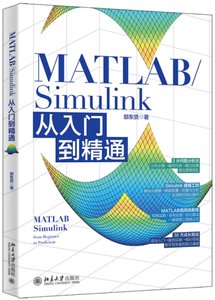Applying Domain-Driven Design and Patterns: With Examples in C# and .NET
暫譯: 應用領域驅動設計與模式:以 C# 和 .NET 為例
Jimmy Nilsson
- 出版商: Addison Wesley
- 出版日期: 2006-05-01
- 售價: $2,550
- 貴賓價: 9.5 折 $2,423
- 語言: 英文
- 頁數: 576
- 裝訂: Hardcover
- ISBN: 0321268202
- ISBN-13: 9780321268204
-
相關分類:
Domain-Driven Design、Domain-Driven Design
立即出貨 (庫存=1)
買這商品的人也買了...
-
 Microsoft Excel 2002 精修範本
Microsoft Excel 2002 精修範本$450$383 -
 System Software: An Introduction to Systems Programming, 3/e (IE-Paperback)
System Software: An Introduction to Systems Programming, 3/e (IE-Paperback)$980$960 -
 Domain-Driven Design: Tackling Complexity in the Heart of Software (Hardcover)
Domain-Driven Design: Tackling Complexity in the Heart of Software (Hardcover)$2,660$2,527 -
 Computer Organization and Design: The Hardware/Software Interface, 3/e(IE) (美國版ISBN:1558606041)
Computer Organization and Design: The Hardware/Software Interface, 3/e(IE) (美國版ISBN:1558606041)$1,200$1,176 -
 Windows XP 使用手冊 SP2 版
Windows XP 使用手冊 SP2 版$490$441 -
 深入淺出 Java 程式設計, 2/e (Head First Java, 2/e)
深入淺出 Java 程式設計, 2/e (Head First Java, 2/e)$880$695 -
 鳥哥的 Linux 私房菜基礎學習篇, 2/e
鳥哥的 Linux 私房菜基礎學習篇, 2/e$780$663 -
 ASP.NET 2.0 網頁設計範例教本
ASP.NET 2.0 網頁設計範例教本$600$510 -
 ASP.NET 2.0 深度剖析範例集
ASP.NET 2.0 深度剖析範例集$650$507 -
 Linux 驅動程式, 3/e (Linux Device Drivers, 3/e)
Linux 驅動程式, 3/e (Linux Device Drivers, 3/e)$980$774 -
 Ajax Hacks 駭客八十招
Ajax Hacks 駭客八十招$580$458 -
 .NET Framework 2.0 Web 型用戶端開發 II (MCTS Self-Paced Training Kit (Exam 70-528): Microsoft .NET Framework 2.0 Web-Based Client Development)
.NET Framework 2.0 Web 型用戶端開發 II (MCTS Self-Paced Training Kit (Exam 70-528): Microsoft .NET Framework 2.0 Web-Based Client Development)$520$411 -
 操作介面設計模式 (Designing Interfaces)
操作介面設計模式 (Designing Interfaces)$880$695 -
 Microsoft Windows Server 2003 R2 系統實務
Microsoft Windows Server 2003 R2 系統實務$780$663 -
 Visual C# 2005 程式開發與介面設計秘訣
Visual C# 2005 程式開發與介面設計秘訣$750$593 -
 Ajax 實戰手冊 (Ajax in Action)
Ajax 實戰手冊 (Ajax in Action)$680$537 -
 Ajax 技術手冊 (Foundations of Ajax)
Ajax 技術手冊 (Foundations of Ajax)$450$356 -
 SQL Server 2005 資料庫程式開發達人手冊, 2/e
SQL Server 2005 資料庫程式開發達人手冊, 2/e$680$537 -
 聖殿祭司的 ASP.NET 2.0 專家技術手冊─使用 C#
聖殿祭司的 ASP.NET 2.0 專家技術手冊─使用 C#$720$569 -
 Linux 核心詳解, 3/e (Understanding the Linux Kernel, 3/e)
Linux 核心詳解, 3/e (Understanding the Linux Kernel, 3/e)$1,200$948 -
 細談資料結構, 5/e
細談資料結構, 5/e$400$360 -
 OpenOffice.org 成功導入寶典
OpenOffice.org 成功導入寶典$400$340 -
 .NET Framework 2.0 Web 型用戶端開發 I (MCTS Self-Paced Training Kit (Exam 70-528): Microsoft .NET Framework 2.0 Web-Based Client Development)
.NET Framework 2.0 Web 型用戶端開發 I (MCTS Self-Paced Training Kit (Exam 70-528): Microsoft .NET Framework 2.0 Web-Based Client Development)$580$458 -
 現代嵌入式系統開發專案實務-菜鳥成長日誌與專案經理的私房菜
現代嵌入式系統開發專案實務-菜鳥成長日誌與專案經理的私房菜$600$480 -
 正確學會 Flash 的 16 堂課
正確學會 Flash 的 16 堂課$520$442
商品描述
Description
“[This] is a book about design in the .NET world, driven in an agile manner and infused with the products of the enterprise patterns community. [It] shows you how to begin applying such things as TDD, object relational mapping, and DDD to .NET projects...techniques that many developers think are the key to future software development.... As the technology gets more capable and sophisticated, it becomes more important to understand how to use it well. This book is a valuable step toward advancing that understanding.”
–Martin Fowler, author of Refactoring and Patterns of Enterprise Application Architecture
Patterns, Domain-Driven Design (DDD), and Test-Driven Development (TDD) enable architects and developers to create systems that are powerful, robust, and maintainable. Now, there’s a comprehensive, practical guide to leveraging all these techniques primarily in Microsoft .NET environments, but the discussions are just as useful for Java developers.
Drawing on seminal work by Martin Fowler (Patterns of Enterprise Application Architecture) and Eric Evans (Domain-Driven Design), Jimmy Nilsson shows how to create real-world architectures for any .NET application. Nilsson illuminates each principle with clear, well-annotated code examples based on C# 1.1 and 2.0. His examples and discussions will be valuable both to C# developers and those working with other .NET languages and any databases–even with other platforms, such as J2EE. Coverage includes
· Quick primers on patterns, TDD, and refactoring
· Using architectural techniques to improve software quality
· Using domain models to support business rules and validation
· Applying enterprise patterns to provide persistence support via NHibernate
· Planning effectively for the presentation layer and UI testing
· Designing for Dependency Injection, Aspect Orientation, and other new paradigms
Table of Contents
About the Author xxv
Forewords xxvii
Preface: Bridging Gaps xxxi
Part I: Background
Chapter 1: Values to Value 3
Chapter 2: A Head Start on Patterns 47
Chapter 3: TDD and Refactoring 77
Part II: Applying DDD
Chapter 4: A New Default Architecture 113
Chapter 5: Moving Further with Domain-Driven Design 143
Chapter 6: Preparing for Infrastructure 181
Chapter 7: Let the Rules Rule 229
Part III: Applying PoEAA
Chapter 8: Infrastructure for Persistence 279
Chapter 9: Putting NHibernate into Action 311
Part IV: What’s Next?
Chapter 10: Design Techniques to Embrace 349
Chapter 11: Focus on the UI 407
Part V: Appendices
Appendix A: Other Domain Model Styles 447
Appendix B: Catalog of Discussed Patterns 483
References 493
Index 501
商品描述(中文翻譯)
**描述**
“[這本書] 是一本關於 .NET 世界設計的書籍,以敏捷的方式推動,並融入企業模式社群的產品。[它] 向你展示如何開始將 TDD、物件關聯映射和 DDD 應用於 .NET 專案……許多開發者認為這些技術是未來軟體開發的關鍵……隨著技術變得越來越強大和複雜,了解如何有效使用它變得更加重要。本書是推進這種理解的寶貴一步。”
– Martin Fowler,《重構》和《企業應用架構模式》的作者
模式、領域驅動設計 (DDD) 和測試驅動開發 (TDD) 使架構師和開發者能夠創建強大、穩健且可維護的系統。現在,有一本全面且實用的指南,主要在 Microsoft .NET 環境中利用這些技術,但這些討論對 Java 開發者同樣有用。
基於 Martin Fowler(《企業應用架構模式》)和 Eric Evans(《領域驅動設計》)的開創性工作,Jimmy Nilsson 展示了如何為任何 .NET 應用程式創建現實世界的架構。Nilsson 用基於 C# 1.1 和 2.0 的清晰且註解良好的程式碼範例來闡明每個原則。他的範例和討論對 C# 開發者以及使用其他 .NET 語言和任何資料庫的開發者都將是有價值的——甚至對其他平台,如 J2EE。
內容涵蓋:
· 有關模式、TDD 和重構的快速入門
· 使用架構技術來改善軟體質量
· 使用領域模型來支持業務規則和驗證
· 應用企業模式通過 NHibernate 提供持久性支持
· 有效規劃展示層和 UI 測試
· 設計依賴注入、切面導向和其他新範式
**目錄**
關於作者 xxv
前言 xxvii
序言:彌合差距 xxxi
**第一部分:背景**
第 1 章:值得重視的價值 3
第 2 章:模式的先行者 47
第 3 章:TDD 和重構 77
**第二部分:應用 DDD**
第 4 章:新的預設架構 113
第 5 章:進一步推進領域驅動設計 143
第 6 章:為基礎設施做準備 181
第 7 章:讓規則主導 229
**第三部分:應用 PoEAA**
第 8 章:持久性的基礎設施 279
第 9 章:將 NHibernate 實踐起來 311
**第四部分:接下來是什麼?**
第 10 章:應該採納的設計技術 349
第 11 章:專注於 UI 407
**第五部分:附錄**
附錄 A:其他領域模型風格 447
附錄 B:討論過的模式目錄 483
參考文獻 493
索引 501






























